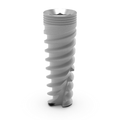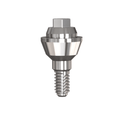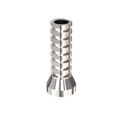ADA Q3 2025 Economic Outlook: What It Reveals About U.S. Dental Practice Trends
Key Insights from the ADA Q3 2025 Economic Outlook
The American Dental Association’s Economic Outlook and Emerging Issues in Dentistry (Q3 2025) provides a comprehensive snapshot of the current U.S. dental landscape.
The findings reveal a stable yet cautious profession, balancing patient care demands with economic pressures.
1️⃣ Practice Activity and Patient Flow
Dental practices continue to operate steadily, though not always at full capacity.
According to the ADA data:
-
12.3 % of practices said they were “not busy enough.”
-
34.8 % said they were “busy but not overworked.”
-
18.1 % reported being “overworked but able to treat all patients.”
-
And 12.3 % said they were “too busy to treat all patients requesting appointments.”
The average waiting time for a new patient dropped slightly to 12.4 business days, suggesting improved appointment availability compared to earlier in the year.
💡 What it means: Clinics are maintaining steady activity, but the majority are not fully booked — indicating that patient volume still hasn’t returned to pre-pandemic highs in every area.

2️⃣ Confidence Levels Among Dentists
Confidence has cooled slightly across the profession:
-
20.5 % of dentists feel very confident about their own practice outlook.
-
9.6 % are very confident about the dental profession overall.
-
Only 7.7 % express strong confidence in the U.S. economy.
💬 In practice: While most clinics are stable, uncertainty about the broader economy continues to influence spending and investment decisions in dental offices.
3️⃣ Rising Costs and Fee Adjustments
Economic pressure remains a major theme.
65.8 % of dentists raised their treatment fees in 2025 — with an average increase of 6.7 %.
The main reasons cited include higher costs for supplies, equipment, and staff wages.
💡 Takeaway: Most practices are raising prices modestly to keep pace with inflation, but profit margins remain tight due to slow reimbursement growth and higher operational costs.
4️⃣ Staffing Challenges
Hiring remains one of the most difficult issues across U.S. dentistry:
-
74 % of practices say recruiting hygienists is very or somewhat challenging.
-
40 % say the same about dental assistants.
-
49.5 % report difficulty finding associate dentists.
These shortages continue to limit patient capacity and add strain to existing staff.
💬 For dentists: Retention and team satisfaction have become key strategic priorities, as replacing skilled staff remains difficult and time-consuming.

5️⃣ Investment Activity
Despite caution, practices continue to modernize and invest:
-
22.0 % of practice owners purchased new equipment in 2025.
-
20.2 % adopted new software systems.
-
39.1 % expanded staff positions during the year.
💡 Insight: Many practices are balancing cost control with targeted investments — especially in digital systems that improve workflow efficiency.

6️⃣ Key Takeaways for Dental Professionals
The ADA report paints a picture of resilient yet cautious growth.
Most clinics remain steady, but owners are adapting — improving efficiency, managing staff shortages, and selectively investing in technology and talent.
For dental labs and suppliers, this environment highlights the importance of reliability, transparency, and support — helping clinicians stay productive despite external challenges.
Conclusion
The ADA Q3 2025 Economic Outlook underscores that dentistry in the U.S. remains strong, but not without its pressures.
Economic uncertainty, staffing shortages, and cost inflation continue to shape daily practice management.
For forward-thinking dental professionals, success in 2025 depends on smart planning, team stability, and leveraging technology to maintain both quality and profitability.
📘 Source:
American Dental Association, Health Policy Institute (HPI).
Economic Outlook and Emerging Issues in Dentistry, Q3 2025.
View the full report on ADA.org














0 comments